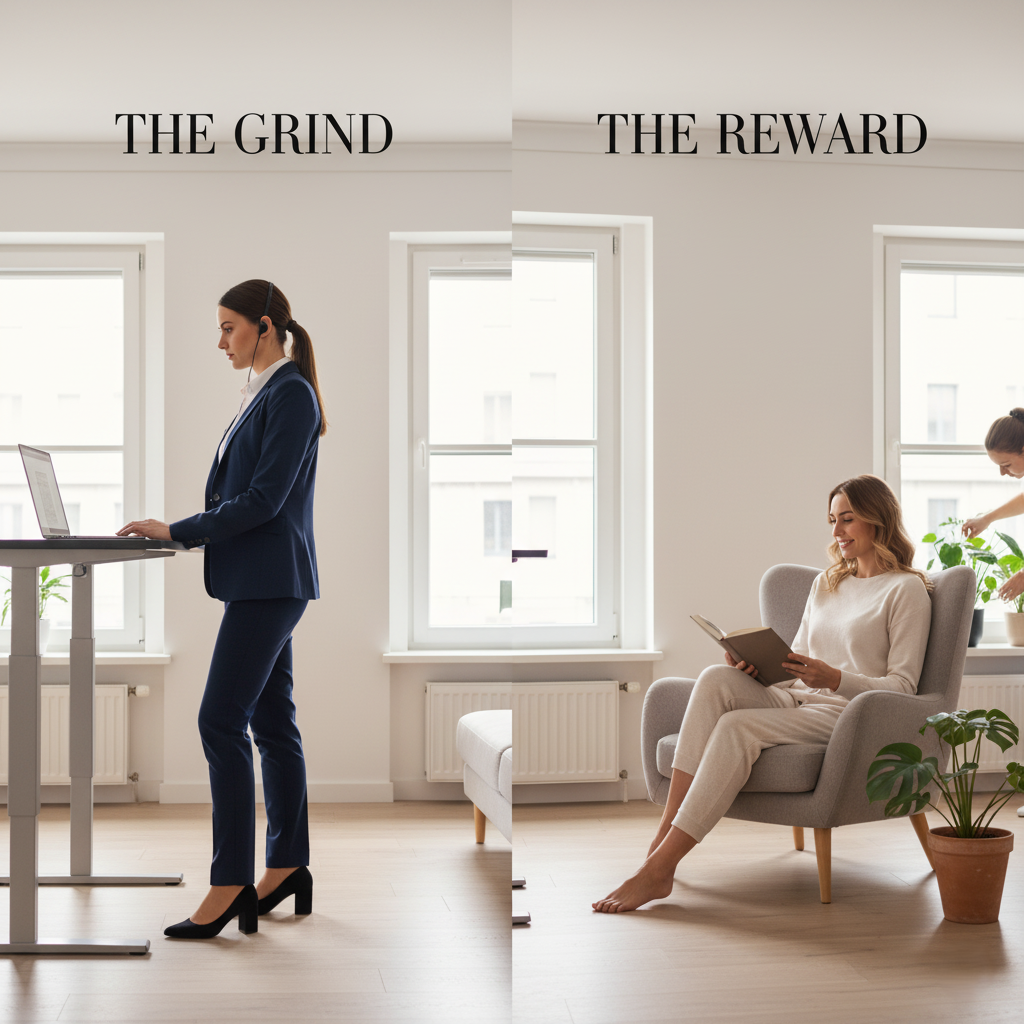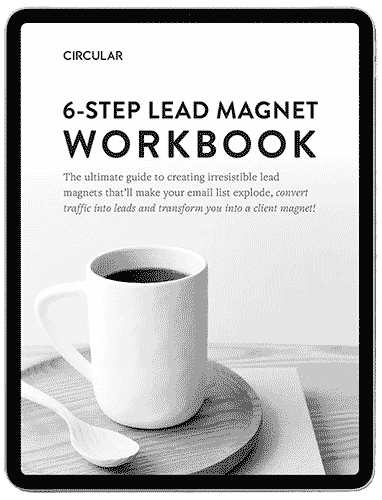
Picture this: you power through another long day, inbox on fire, calendar packed, and you catch yourself thinking, I wish I could work less. That pull for options, whether it’s the peace of mind of having your bills paid off or the freedom to go part-time or retire early, is real. And yes, it’s possible.
Financial freedom means your savings and investments cover your life without a full-time job. That unlocks early retirement for some, or a work-optional setup for many, like part-time work, consulting, or walking away when a job stops serving you.
In October 2025, 65% of women are focusing on financial goals like saving and debt payoff. If you’re 25 to 45, building your career while juggling big personal goals, this matters. It’s the difference between sticking it out in a role that drains you and choosing work that fits your season of life.
Let’s talk about what true financial freedom means, what could get in the way of you achieving it, and how you can get started on your financial freedom journey. You don’t need to quit your job tomorrow to feel like you’ve won. You just need the power of choice that provides you the freedom to say yes or no to opportunities without financial fear. That’s the heart of what we’re talking about, and I promise, it’s closer than you think. Ready to map your next best step?
What Does Financial Freedom Really Mean for Women Today?
Financial freedom is not a finish line you cross once. It is the ability to choose work that fits your life, your health, and your values. Maybe that looks like early retirement. Maybe it looks like part-time consulting while raising a family or taking a sabbatical without panic. The point is choice, not hustle forever.
Here is the good news. Most women are already getting organized. Recent research shows about 68% of women have a clear plan for their money in 2025. That momentum matters. With a simple system and steady habits, work-optional is not a fantasy. It is a timeline.
Busting Myths About Early Retirement
Let’s clear the fog. These myths keep smart women on the sidelines:
- “You need millions to retire early.” Translation, all or nothing. Reality, you need enough to fund the life you want, not a luxury label. A lean, happy lifestyle at 52 beats a stressed, expensive one at 67.
- “Early retirement is only for the rich.” Many women hit work-optional by their 50s using steady investing, a high savings rate in the peak earning years, and right-sized living costs. The math is simple, even if the habits are not.
- “Investing is too risky.” Not investing is the bigger risk, since inflation shrinks cash over time. Investing consistently, month over month, is what grows freedom.
How do you decide how much you need to reach financial freedom?
Design the life first, then price it. Your target number comes from annual spending needs, not a random number you came across on Instagram.
And yes, planning matters so you can build a repeatable system. Think automatic contributions, a simple investment lineup, and spending that reflects your values. For example, you could boost your savings rate from 12% to 28% by renegotiating rent, dropping unused subscriptions, and putting every raise on autopilot. You could still be in a job you like, but potentially walk away in five years. That is power.
Key takeaways you can use today:
- Set a target monthly spend for your ideal lifestyle.
- Automate retirement and brokerage contributions on payday.
- Keep investments simple; broad index funds usually win.
- Trim the three big rocks – housing, transportation, food.
- Revisit your plan every quarter; small tweaks compound.
The Work-Optional Lifestyle: More Freedom, Less Burnout
Work-optional means you choose work that serves you. You take projects that fit your season, not the other way around. Many ambitious women scale back after building wealth, then enjoy flexible roles, consulting, or passion projects without burning out.
What it looks like in real life:
- Schedule control: Four-day weeks during school years, or summers off every other year.
- Project fit: Higher value work, fewer meetings, clear deliverables, more focus.
- Geographic freedom: Ability to move, travel slowly, or work from anywhere.
- Exit power: If a job turns toxic, you can pause, pivot, or rest.
Why does this work even without fully retiring? Your investments cover a portion of living costs, so you only need to earn the gap. Even a part-time income can bridge it, and that buffer lowers stress fast.
Practical tip to avoid burnout: set a freedom floor. Decide the minimum income you need to cover essentials, then design your workload around it. Keep a 6 to 12 month cash cushion, automate investing, and cap your hours. Protect your energy like it is a line item. You want a sustainable rhythm, not a sprint.
Bottom line, financial freedom is a lifestyle design tool. You do not have to quit forever to win. You need options, which come from a clear plan, steady investing, and the confidence to choose what is right for you now.
Proven Steps to Build Your Financial Freedom Roadmap
Think of this like turning on GPS for your money. You set the destination, then follow clear turns. These steps work whether you want early retirement or a work-optional life with fewer hours. Keep it simple, keep it steady, and let your plan buy back your time.
Step 1: Track Your Money and Cut Unnecessary Spending

Start by seeing where every dollar goes. Not forever, just for 30 days. You are aiming for a savings rate of 20 to 50 percent, which sounds big, but it gets real once you clean up the leaks.
Try this quick system:
- List your take-home pay, fixed bills, and then typical spending.
- Sort spending into needs, wants, and waste.
- Cut the waste first, then trim a few wants that do not add real joy.
What to cut this week:
- Subscriptions audit: Cancel trials, pause apps, rotate streaming. Use a budget app to spot sneaky renewals. A roundup of top tools lives here.
- Negotiate bills: Call internet, phone, and insurance providers. Ask for loyalty discounts or a lower tier. Then treat the savings like a tiny raise.
- Refinance or shop rates: Check auto and renters insurance annually. Compare interest on credit cards and balance transfers if you are paying high rates.
- Right-size the big three: Housing, transportation, food. Roommates for a season, public transit or used cars, meal planning, and fewer takeout defaults. These shifts move the needle fast.
Micro win to try: pick one bill and cut it by 15 percent this week. Then automate that amount into savings or your investment account so it sticks. No willpower needed.
Step 2: Pay Off Debt and Start Investing Early

Debt first, growth next, that is the usual advice. Here is a sharper version that balances both.
Your order of operations:
- Grab any 401(k) match; it is free money.
- Attack high-interest debt, usually credit cards. Choose your debt payoff strategy where you are putting most of your efforts toward one debt while making minimum payments on the rest.
- Once high-interest debt is down, increase investments across retirement and a taxable brokerage.
Why invest early? Compounding is the quiet engine of financial freedom. Even small monthly amounts can snowball over 5 to 10 years. Many women still hesitate to invest boldly, which means missed growth. The opportunity is real, women already control about 10 trillion dollars in U.S. household financial assets, and that figure is expected to triple by 2030. Your piece grows by being in the market, not waiting for perfect timing.
What to buy if you are busy:
- Low-cost index funds in a 401(k) or IRA, broad funds like total market or S&P 500.
- Target-date funds for set-it-and-go simplicity.
Career perk to use this quarter: increase your 401(k) contribution by at least 1 to 2 percent, especially after a raise. If there is a match, aim to capture the full amount. That single move compounds more than endless budgeting tweaks.
Step 3: Plan for Phased Retirement and Side Income
Work-optional is not all or nothing. Think dimmer switch, not off switch. You can scale down hours in stages, then cover the gap with small, steady income streams.
Common side income paths:
- Freelancing or consulting: Package your current skills into project work.
- Rentals or house hacking: A room rental, a garage apartment, or short-term rentals within local rules.
- Digital or service income: Templates, workshops, tutoring, fitness coaching, or care work with premium scheduling.
- Career-adjacent gigs: Adjunct teaching, industry writing, advisory roles.
Phased retirement looks like reducing from 40 hours to 30, then to 20, while investments carry part of your budget. It keeps benefits longer and reduces burnout. Many women report high financial stress in 2025, about 65%, so we build buffers that calm the nervous system and the numbers.
Your safety net checklist:
- Emergency fund: 3 to 6 months of essential expenses. Keep it in a high-yield savings account so it is liquid.
- Fixed cost review: Lower your baseline before you scale down hours. Cheaper base, easier ramp.
- Income bridge plan: Decide which income stream covers the gap, then test it for 90 days before cutting hours.
Try this quick exercise: Map your freedom floor. Write the monthly number that covers housing, food, transit, insurance, and minimum joy. Subtract expected investment withdrawals or passive income. The remainder is your target side income. If that is 1,200 dollars, what is the simplest path to that number? That is your pilot.
Want a tool to keep your plan visible? A budget app with goal tracking can help you monitor savings and side income targets in one place. This current list compares popular options, see Best Budgeting Apps of 2025.
Bottom line: stack these three moves and you build a repeatable system. Track and trim, kill high-interest debt while you start investing, then design a phased plan with a sturdy cash cushion. That is how financial freedom shifts from idea to calendar.
Overcoming Obstacles to Reach Early Retirement

The goal of early retirement or work-optional is not about perfection but about progress. You will face headwinds, from pay gaps to caregiving, but there are clean, repeatable moves that keep you on track. Think route changes, not dead ends. Let’s tackle the two biggest blockers and give you practical steps you can start this month.
Tackling the Gender Wealth Gap Head-On
Lower pay and career breaks mean fewer dollars invested, which slows compounding. That is the truth, not the end of the story. The gap narrows when you treat income, savings rate, and investing as a system you control.
Try these moves that work in real life:
- Negotiate on purpose: Research pay ranges, write your business case, and ask for a raise on a set date. If you change roles, aim to reset pay to market.
- Stack a side hustle: Package your skill into 5 to 10 hours a week. Think editing, design, tutoring, consulting, or care services with premium scheduling. Treat it like a small business, track profit, and auto-route 30 to 50 percent to investments.
- Automate investing: Send money to a 401(k), IRA, and a taxable brokerage on payday. Keep it simple with low-cost index funds. Confidence grows with action, and steady contributions build financial freedom.
- Bridge career breaks: Before a break, increase contributions, lower fixed costs, and plan a return-to-work ramp. During the break, keep some investing going, even if in small amounts.
Mini playbook to close the gap faster:
- Raise your savings rate by 1 to 3 percent this quarter, then again next quarter.
- Channel every bonus or freelance check into retirement and brokerage until you hit your target.
- Use a clear, one-page plan. Women who pair planning with automatic contributions tend to stick with it. This explainer on building confidence and closing the savings gap is a helpful read.
Bottom line: earn more where you can, invest what you can, and let time pull you forward. The math bends your way when you compound earlier and more often.
Balancing Career Ambitions with Family and Health Needs
Caregiving, kids, health, and the mental load can collide with work plans. That is normal. The goal is not to pick work or family, it is to design a plan that breathes.
Build a flexible path that holds up in real life:
- Phased work: Move from 40 hours to 30, then to 20, while your investments cover a slice of spending. Keep benefits longer, reduce stress, and protect your health.
- Post-freedom part-time: If you are work-optional, plan for 10 to 15 hours a week of consulting or project gigs. That light income bridges years before tapping more of your portfolio.
- Caregiving plan: Price childcare, elder care, or respite care now. Set a monthly “care sinking fund” so surprises do not derail investing.
- Life event prep: Map what happens if you receive an inheritance or face widowhood.
Your checklist for long-term security:
- Keep a 6 to 12 month emergency fund, stored in a high-yield account.
- Maintain disability and life insurance while others rely on your income.
- Hold a “freedom floor” budget, the essential number that guides work hours and withdrawals.
The takeaway: let your plan flex with your season. Financial freedom is the tool, work-optional is the outcome, and your health and family goals fit inside that design. You do not have to choose only one. You get to choose what matters most right now.
Key Takeaways

Financial freedom is about choices, not perfection. You set the pace, you pick the path, and you decide when work is full-time, part-time, or work-optional. The playbook is simple and repeatable: track and trim spending, kill high-interest debt while investing on autopilot, and design a phased plan that protects your energy and your cash flow.
Start today with one tiny move. Open your budget for 15 minutes, cancel one leak, raise your 401(k) by 1 percent, or map your freedom floor. Small wins stack. That momentum is yours to use.
Remember the core promise: money buys time and options. Not everyone wants to retire early, and that is fine. Work-optional is a win too, fewer hours, flexible projects, or the power to leave when a job stops serving you.
Your next step is to pick one action you will do by Friday, then tell us in the comments so we can cheer you on. If you want a personalized plan, book time with a fee-only planner and pressure test your numbers. You have the tools, you have the timeline, and you have a community behind you. Keep going, your future self is already thanking you.

